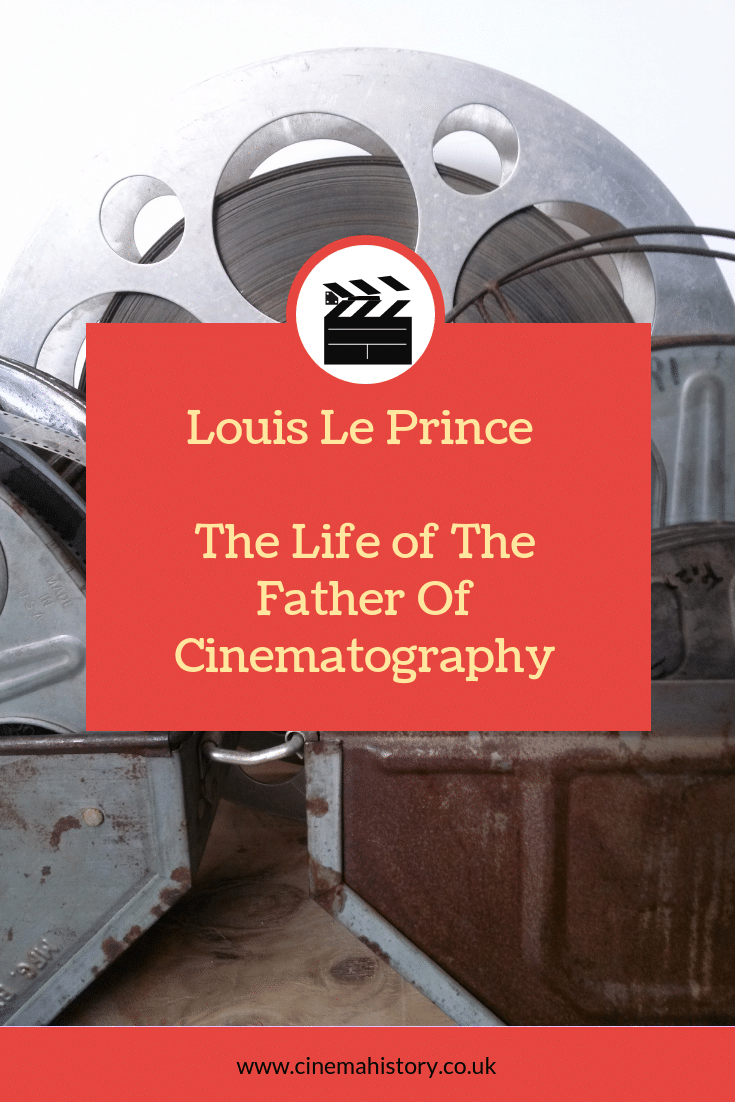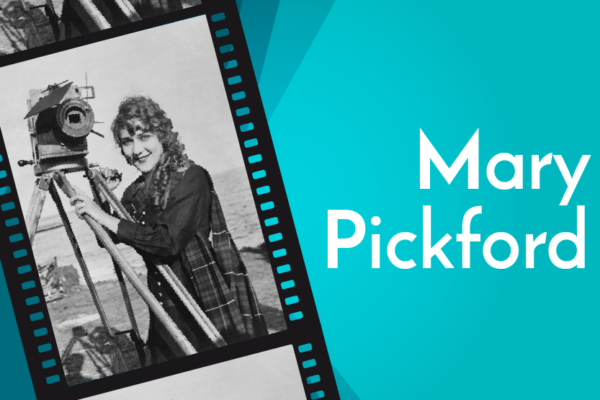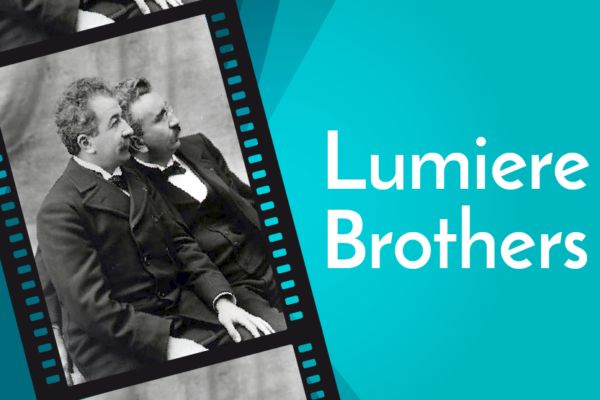16th September 1890.
Louis Le Prince, patent papers in hand, waved farewell to his family and boarded a train to Paris.
He was heading to America, via England, to demonstrate his brand-new invention.
A revolutionary new camera! The first to capture moving pictures.
Louis never made it to Paris.
Nor did his luggage, which was said to contain the patent papers for his invention.
Rumours of his death circulated.
Was it Murder?
Suicide?
Even assassination by Thomas Edison could be as a possibility.
But who is Louis Le Prince? What did he do? And why would Thomas Edison be implicated in his disappearance?
Who is Louis Le Prince?
Louis Le Prince is the true father of cinematography. A talented inventor with a vast knowledge of photography and film development.
He held 5 patents for camera and projectors – Such as a 16-lens camera/projector combo and a single-lens camera capable of shooting at 5-7 frames per second.
And he beat Thomas Edison to moving images by a YEAR!
Except, he never got to display his invention in public. This fact alone allowed Thomas Edison to claim he was first and patent the invention.
Edison’s patent allowed him to claim royalties on any films made.
And he did with a mafia-like grip.
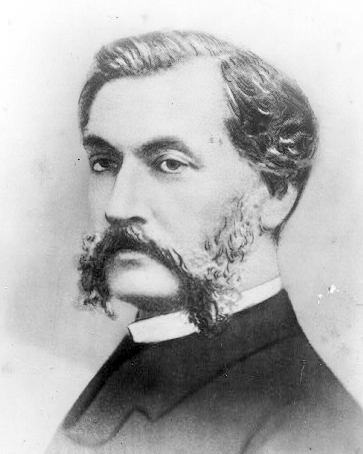
Le Prince and Daguerre
Louis Le Prince was born on the 28th August 1841, the son of an artillery major in the French Army.
His father’s best friend was Louis Daguerre, photographer and inventor of Daguerreotype – a popular style of photo development at the time.
By all accounts, young Louis visited Daguerre constantly.
And Daguerre became a dedicated tutor.
He began to show Le Prince his work. He taught him how to use his photography system and how to process film. Processing film was a complex, chemical-heavy process. So Daguerre’s lessons also strayed into chemistry.
Daguerre’s influence is evident throughout Le Prince’s life.
Daguerre had apprenticed in theatre design and panoramic painting as a young boy.
And guess what?
Le Prince went on to study painting in Paris.
Daguerre’s chemistry lessons may have been the inspiration for Le Prince’s later studies. After his painting degree, he enrolled in a post-graduate chemistry course at Leipzig University.
This course set him up nicely for his future pursuits.
Louis Le Prince Heads To England
In 1866, Le Prince’s swapped France for England.
A college friend John Whitley invited Le Prince to work at his company in Leeds. A few years later, Le Prince married Whitley sister Elizabeth, a talented artist.
Elizabeth (or Lizzie) and Le Prince set up their own art school and soon became well-known artists. They perfected a method for fixing colour photos onto metal and pottery. They were commissioned to create a portrait of reigning Queen Victoria.
This portrait is currently buried under Cleopatra’s Needle in London.
Making Movies
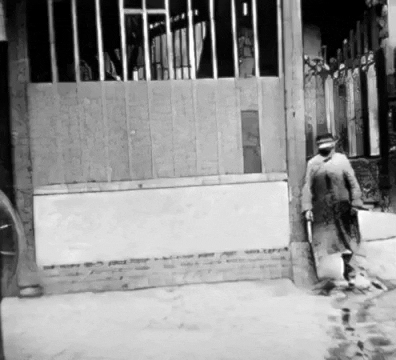
In 1881, Le Prince and his family moved to the United States to manage a small team of artists who created panoramas. Once again, Daguerre’s influence has popped up in his life.
In his spare time, he began to take an interest in moving pictures.
He started to tinker with an invention which could create photographs that move. The result was a 16-lens camera which he patented in 1886. The patent description states: “Method of and apparatus for producing animated pictures of natural scenery and life”.
The camera took 16 photos in one second to create a sequence of images.
The camera used George Eastman’s paper film.
However, Le Prince knew he could make a better camera, and so created a patent for a single-lens camera.
Le Prince had his patent accepted around 10 months before Thomas Edison’s company had even submitted theirs.
Roundhay Garden Scene
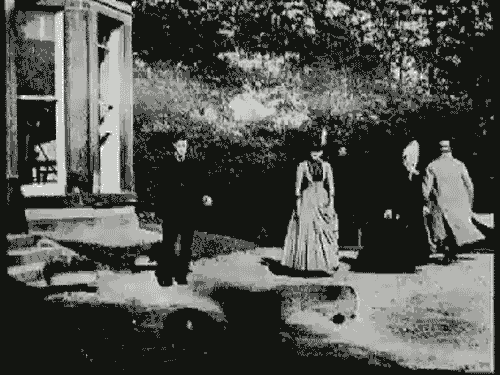
By 1888, Le Prince had returned to Leeds from the States.
He built his single-lens camera. And he filmed Roundhay Garden Scene in his in-laws back garden.
The film shows Sarah, Joesph and a friend, Annie Hartley in the garden, taking a turn around the garden, which Adolpho Le Prince, Louis and Lizzie’s son, plays.
It was recorded at 7 frames per second, using paper film produced by Eastman Kodak. The film’s running time is just over 2 seconds.
It’s considered the oldest surviving film in existence.
Louis Le Prince followed up Roundhay Garden scene with Traffic Crossing Leeds Bridge and The Accordion Player.
No public film display happened, though his family all recall seeing the projections in his studio.
His three films and his cameras are all held in the National Science and Media Museum in Bradford, England.
The Disappearance Of Louis Le Prince
So before we get to the conspiracy theories, let’s look at the facts.
It’s September 1890.
Le Prince’s family are living in the US. Le Prince is in England.
Before leaving for the US, Le Prince travelled home to France to spend time with his family and friends in Dijon.
16th September 1890
According to Le Prince’s brother, Louis boarded a train to Paris.
When the train arrived, his friends found no trace. He wasn’t on a later train either.
He was never seen again. Despite searches by French and British police, a body was never officially identified.
However, a photo of a body bearing a resemblance to Le Prince was discovered in Police archives in 2003. The photo is from around 1890.
Louis Le Prince was declared dead in 1897.
So, what happened?
Theories include:
- Suicide
- Family-ordered disappearance
- Assassination
Suicide
Louis Le Prince’s grandson claimed that Le Prince was on the verge of bankruptcy. He also claimed this made him Suicidal. Le Prince simply wanted to disappear without a trace.
Except, Le Prince’s business was profitable. And by some accounts, Le Prince was proud of his inventions and excited for his future.
After all, he had a first-class ticket booked to America and a display of his invention.
Perhaps the debts may have come from other ventures, such as with his college friend and brother-in-law, John Whitley.
Additionally, mental health is hard to judge. And the stigma of it would have been enough to keep it hidden. We will never know what went through his mind. Perhaps something tipped him over the edge?
Family Ordered Disappearance
Jacques Deslandes, author of Histoire comparée du cinema, claimed Le Prince voluntarily disappeared due to financial reasons, but added that “familial conveniences” may have also been a motive.
A note shown to a journalist by the director of the Dijon municipal library in 1977 claimed that Le Prince died in Chicago in 1898. The journalist also suggests that Le Prince was gay, though there is no evidence suggests this.
This 1898 death would have meant that Le Prince was alive when a lawsuit ruled Edison, the creator of Cinematography.
Assassination
Many believe that Le Prince’s disappearance was a hit ordered by rival Thomas Edison.
It may seem bizarre, but let’s look a few details.
Le Prince shot the film on 14th October 1888. A full year before Edison’s Monkeyshines, an 1889 film which Edison used to test the Kinetoscope.
Except, the Kinetoscope was designed for single-person viewing. Le Prince’s idea involved projecting the image so multiple viewers could watch at the same time.
Hello, advent of cinema.
Edison was also known for stealing other people’s ideas. He was also known for going to war with anyone in the same space. After all, he went to war with anyone using AC electric power, instead of his DC model.
It’s reasonable that by showing his work to the US public, Le Prince would be in the spotlight. Edison had spent a fortune setting up an arm of his company to work on moving picture, and yet, he had failed.
Unless he could stop the display.
Perhaps, if Le Prince was out of the picture…
Edison’s Mafia
The assassination theory holds up if you look at Edison’s later behaviour.
Such as his Mafia-like control of the blossoming film industry.
In 1908, Edison began the Motion Picture Patents Company, also known as the Edison Trust.
The trust included all major US film studios, Kodak Eastman (film supplier) and George Klein (Film Distributor).
The Edison trust ensured that every motion picture used Edison patented cameras and Kodak films.
Exclusively.
Edison also controlled the types of films that were made and who could show them. He made cinemas rent the reels, instead of buying them, to maximise profit.
Edison also restricted film lengths to just one reel, though relented when independent and foreign two- and three-reelers proved popular.
If you didn’t comply, then a gang of men would happen to drop in to destroy your studio.
The Edison Trust is also one of the factors that lead to many film studios setting up shop in Hollywood – far away from Edison’s New York studio.
So, would this have happened if Le Prince had the patent instead of Edison? Maybe, maybe not.
But Edison wouldn’t have been first.
And he certainly wouldn’t have had the fame.
The Death Of Adolphe Le Prince
Adolphe Le Prince appeared in his father’s films, usually playing the accordion. He was vocal about seeing his father’s movies displayed as a projection.
In 1898, one year after Louis Le Prince was declared dead, Adolphe appeared as a key witness in a case.
Thomas Edison had brought a lawsuit against the American Mutoscope Company, also known as Biograph. William K Dickson began Bioscope in 1895. Dickson has been the pioneering inventor at Thomas Edison’s laboratory who helped create motion pictures.
To avoid stepping on the patent, they used a different camera setup.
But Edison still sued.
The Lawsuit claimed that Edison was the sole inventor of Cinematography. He was entitled to royalties.
Adolphe took the stand as a witness for Biograph. He was not allowed to present his father’s two cameras as evidence.
The court ruled in favour of Edison.
Adolphe Le Prince was shot dead two years later.
Roundup
Louis Le Prince was the first person to create “film” as we know it.
When he disappeared, he left the door open for Thomas Edison to corner the market with a suspiciously similar design.
Until recently, he was a forgotten legend in film’s history, fiercely overshadowed by the PR machines of the Lumiere brothers and Edison.
But Louis Le Prince will be remembered as the true father of Cinematography.
